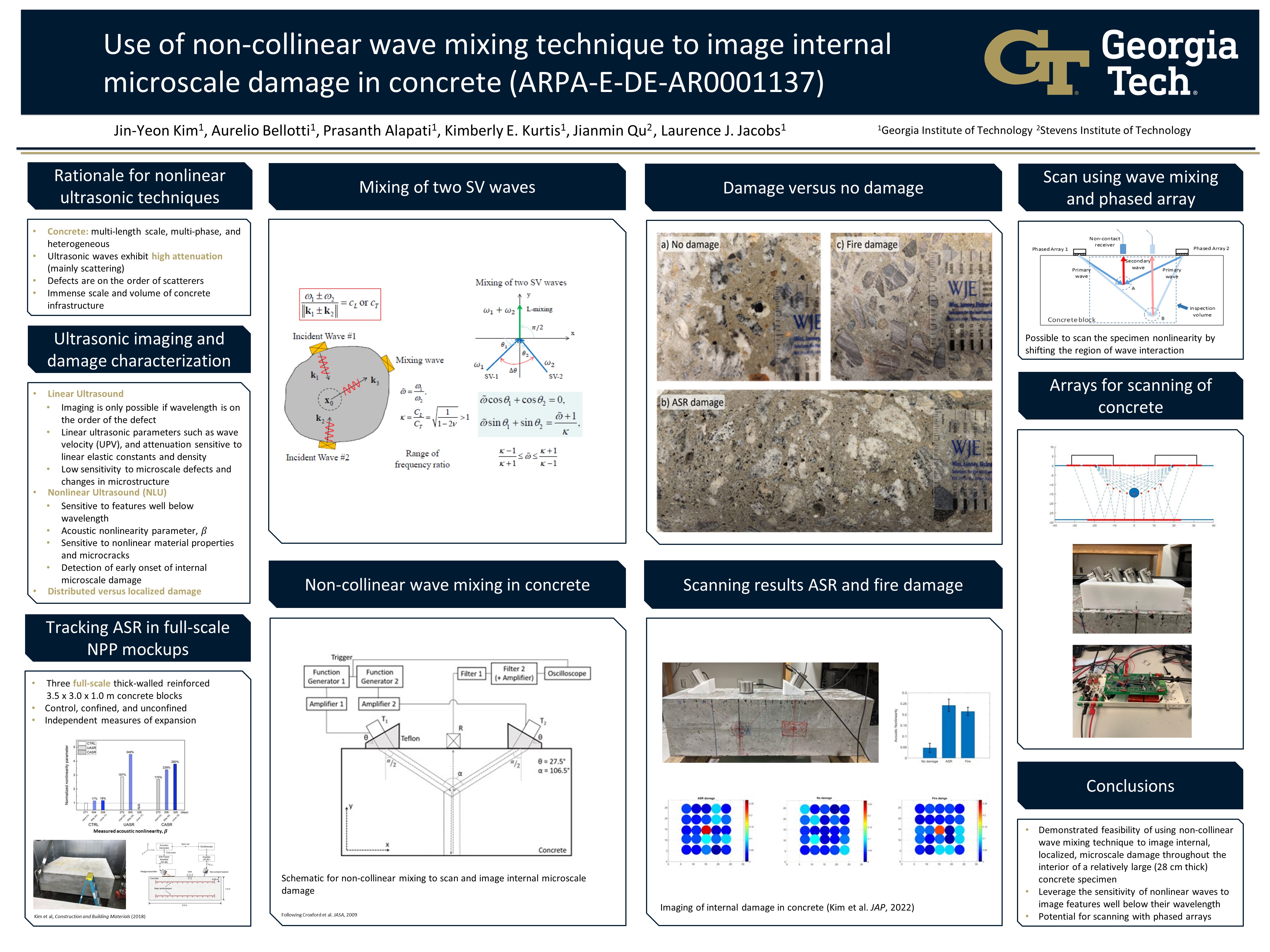RECOMMENDATIONS FOR NDT OF CONCRETE COMPONENTS FOR PERFORMANCE-BASED SPECIFICATIONS
PI: Laurence Jacobs
Co-PI(s): Kim Kurtis, Ryan Sherman, Jin-Yeon Kim and Jianmin Qu
Institution(s): Georgia Institute of Technology
Abstract
This poster demonstrates the feasibility of using a non-collinear wave mixing technique to image internal microscale damage throughout the interior volume of a relatively large (28 cm thick) concrete component. Unlike metals, concrete is rather heterogeneous with inherent microstructural features ranging in length from nanometers to millimeters or even centimeters. Many damage features that may significantly reduce the concrete material’s integrity are also within this range of length scales. This multiphase, heterogeneous, and multiscale nature of concrete makes the development of linear ultrasound based NDE and monitoring techniques for concrete technically challenging. Successful imaging using ultrasound requires that the ultrasonic wavelength be on the order of a few millimeters, yet the inherent length scale of this heterogeneous material with its fine and coarse aggregates is on this same millimeter length scale and larger. By exploiting the underlying mechanics of nonlinear wave mixing, this research shows it is possible to mix two incident waves with frequencies low enough to propagate without being scattered by the inherently heterogenous, concrete microstructure, while still being sensitive to damage features with length scales well below these incident wavelengths. Scanning and imaging is accomplished by manually adjusting the locations of the two incident waves, while knowledge of the wave speeds in concrete plus synchronization identifies the location of the mixing zone – the specific volume of concrete being imaged. The viability of the proposed technique is demonstrated by examining a concrete prism specimen with known, embedded internal microscale damage.

Please comment below with any statements or questions you may have. Also let GTI if you would be interested webinars or presentations on similar topics.

